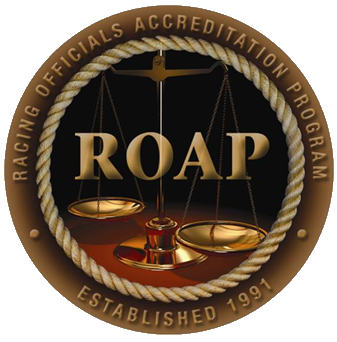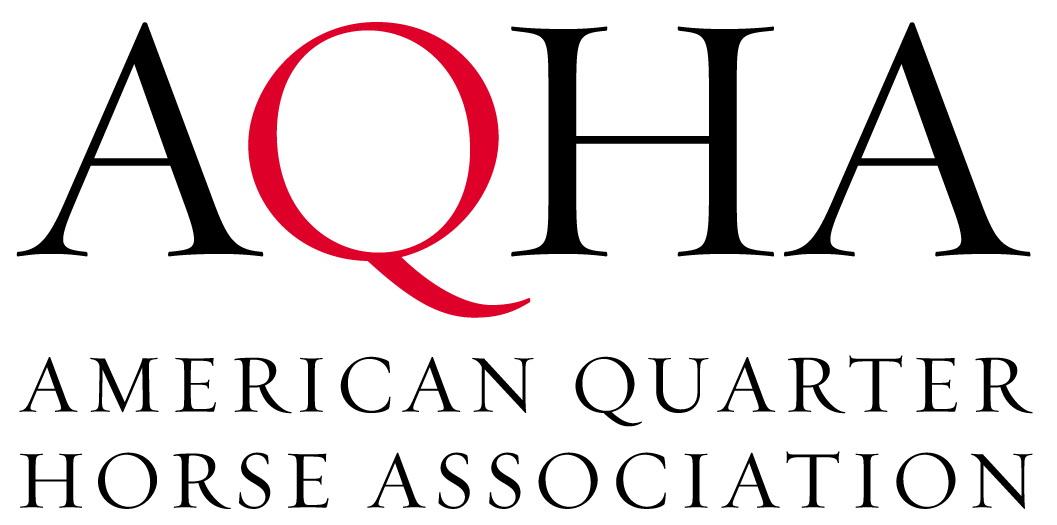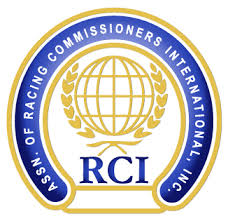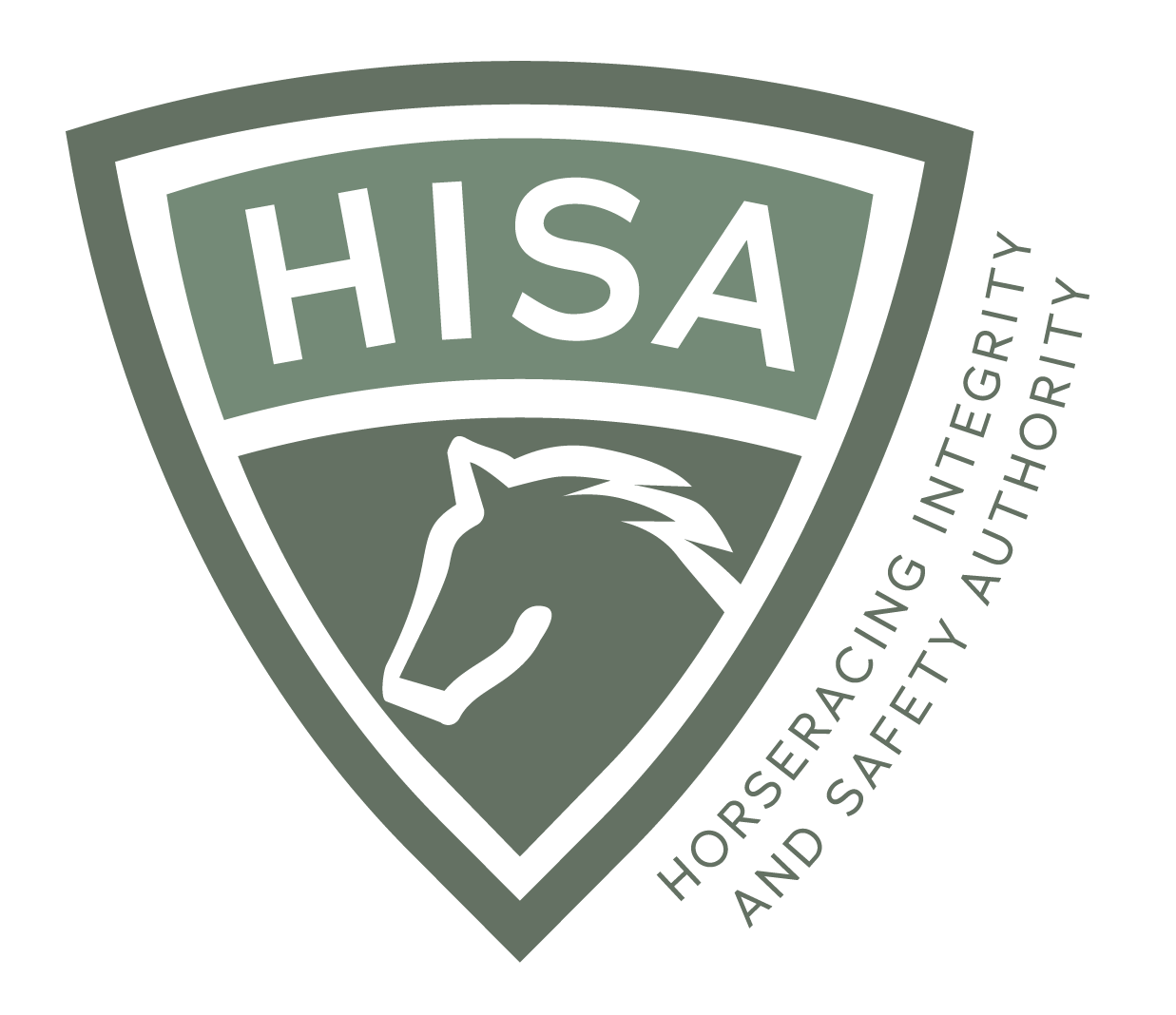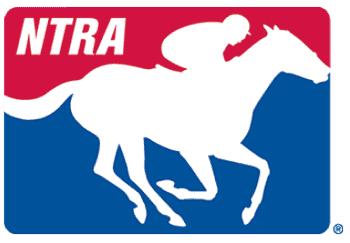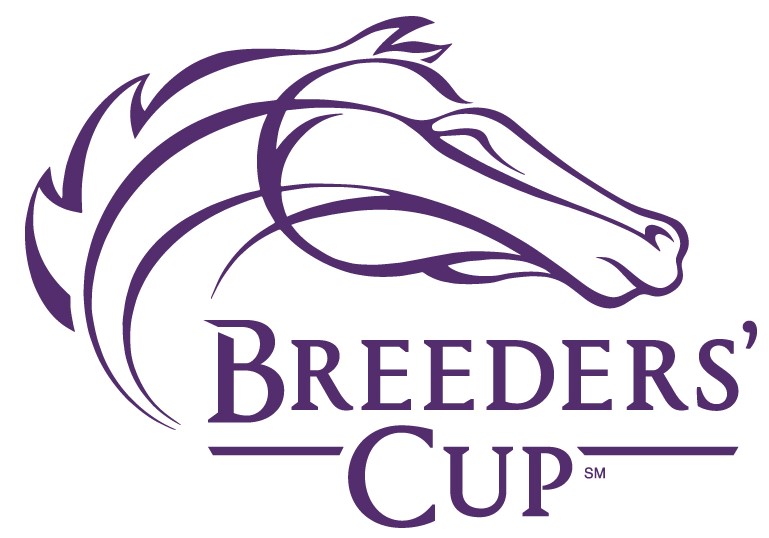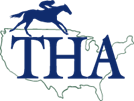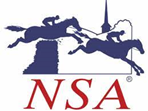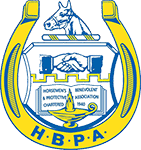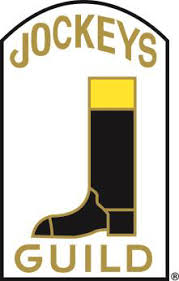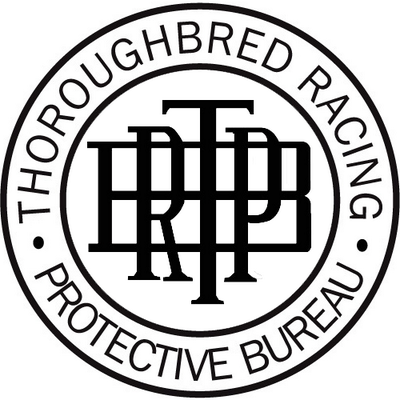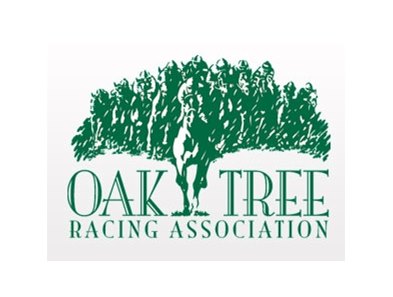These Points of Emphasis are subject to the following LEGAL PROVISIONS - Please Read Carefully
ROAP 2017-2018 POINTS OF EMPHASIS
The ROAP Points of Emphasis are established by the ROAP stewards’ advisory committee and approved by the board of directors. They are designed to provide guidelines to follow for continuing education programs. Additionally, these points of emphasis are distributed to all working stewards and racing authorities to promote awareness and uniformity.
POINT OF EMPHASIS # 1
Crop Issues and Usage of the Riding Crop
Although every jurisdiction maintains its own sovereignty regarding Administrative Procedures Acts and/or Laws; it is advisable to refer to the ARCI Model Rules for pertinent language regarding both the specifications and usage of the riding crop. If the rules in your jurisdiction vary considerably from the ARCI Model Rules, Stewards are encouraged to contact their Executive Directors or Secretaries to implement rule changes that address specifications and usage in a manner more consistent with today’s racing environment.
ARCI-010-035 Running of the Race
A. Equipment
(1) All riding crops are subject to inspection and approval by the Stewards and the clerk of scales.
(a) Riding crops shall have a shaft and a flap and will be allowed in flat racing including training, only as follows.
(A) Maximum weight of eight ounces;
(B) Maximum length, including flap of 30 inches
(C) Minimum diameter of the shaft of three-eighths inch; and
(D) Shaft contact area must be smooth, with no protrusions or raised surface, and covered by shock absorbing material that gives a compression factor of at least one-millimeter throughout its circumference.
(b) The flap is the only allowable attachment to the shaft and must meet these specifications:
(A) Length beyond the end of the shaft a maximum of one inch;
(B) Width a minimum of 0.8 inch and a maximum of 1.6 inches;
(C) No reinforcements or additions beyond the end of the shaft;
(D) No binding within seven inches of the end of the shaft; and
(E) Shock absorbing characteristics similar to those the contact area of the shaft.
The adoption and enforcement of these ARCI Model Rules on a national basis by racing commissions should be a safety and integrity priority in every jurisdiction. When jockeys are allowed to use whips or riding crops that have varying degrees of force at impact, an unfair advantage is achieved. Stewards and racing officials in the Jockeys’ Room should be inspecting the whips and riding crops on a daily basis no matter what rule is in effect in your jurisdiction.
The current ARCI Model Rule is very specific on the specifications of the riding crop, but a number of whip makers have been modifying whips and making riding crops that do not adequately meet these specifications. With a tape measure, postage or cooking scale and a trained eye, Stewards and racing officials can tell the difference between riding crops that meet, or do not meet the Model Rule specifications. In addition, whips or riding crops that are frayed, or the shaft is broken inside the flapper, or otherwise damaged should not be allowed. It is recommended that racetracks keep a number of approved riding crops for use by and for sale to jockeys whose whips or riding crops are not acceptable.
One source for approved riding crops that is recognized by The Jockey Club, National Steeplechase Association, British Horse Racing Authority and the Jockeys’ Guild is Old Mill Saddlery at http://www.saddlery.biz/procush-flat-race-whip?sqr=whip&. The Jockey Club Safety Committee in cooperation with Dr. Mick Petersen’s Racing Surfaces Laboratory at the University of Kentucky has developed equipment that is able to test the impact of whips and riding crops to help further establish specifications and certification of manufacturers. Dr. Petersen’s encourages racetracks and racing commissions to send him whips for testing.
Of even more importance than adopting the specification for the Riding Crop, is adoption of the following ARCI Model Rule on the use of the riding crop.
ARCI-010-035 Running of the Race
E. Post to Finish
(7) Use of Riding Crop
(a) Although the use of a riding crop is not required, any jockey who uses a riding crop during a race shall do so only in a manner consistent with exerting his/her best efforts to win.
(b) In all races where a jockey will ride without a riding crop, an announcement of such fact shall be made over the public address system.
(c) No electrical or mechanical device or other expedient designed to increase or retard the speed of a horse, other than the riding crop approved by the Stewards, shall be possessed by anyone, or applied by anyone to the horse at any time on the grounds of the association during the meeting, whether in a race or otherwise.
(d) Riding crops shall not be used on two-year-old horses before April 1 of each year.
(e) The riding crop shall only be used for safety, correction and encouragement.
(f) All riders should comply with the following when using a riding crop:
(A) Showing the horse the riding crop and giving it time to respond before hitting it:
(B) Having used the riding crop, giving the horse a chance to respond before using it again;
(C) Using the riding crop in rhythm with the horse’s stride.
(g) Prohibited uses of the riding crop includes but are not limited to striking a horse:
(A) on the head, flanks or on any other part of its body other than the shoulders or hind quarters except when necessary to control a horse;
(B) during the post parade or after the finish of the race except when necessary to control the horse;
(C) excessively or brutally causing welts or breaks in the skin;
(D) when the horse is clearly out of the race or has obtained its maximum placing;
(E) persistently even though the horse is showing no response under the riding crop; or
(F) striking another rider or horse.
(h) After the race, horses will be subject to inspection by a racing or official veterinarian looking for cuts, welts or bruises in the skin. Any adverse findings shall be reported to the Stewards.
(i) The giving of instructions by any licensee that if obeyed would lead to a violation of this rule may result in disciplinary action also being taken against the licensee who gave such instructions.
These rules were adopted after extensive consultation with the Jockeys’ Guild management and meetings with jockey colonies from New York to California. The rules are very much self-explanatory, but consistent enforcement is more difficult. First and foremost, the Stewards must give the jockeys a clear and concise explanation of what is expected in the use of the riding crop. Second, race videos of do’s and don’ts should be reviewed with the jockeys. A penalty structure should be developed for first and multiple offences (see Ontario example).
Finally, the Stewards must be diligent in the live watching of each race and then reviewing the races immediately after declaring the race official and the next day. Then, if the Stewards see potential infractions of these rules either live or thereafter, the offending jockeys should be immediately notified and if deemed necessary called to a hearing with the Stewards. Again, keeping a log of the use of whip infractions by jockey and previously recommended for riding infractions will help the Steward to achieve consistency in their level of fines and suspensions.
Another example of the usage rule is from Ontario. The Ontario Racing Commission passed crop regulations in 2009. There was much debate at that time, but now there is little to no discussion concerning their crop rules. Not only did they implement a usage regulation but also a penalty guideline as well. The jockeys have adapted to the rules and respect them with little violations. Click here to review the Ontario rule and penalty directive from 2009. Other states with similar rule are California, Minnesota, and New York.
Another related race riding rule is:
ARCI-010-035 Running of the Race
E. Post to Finish
(1)Horses Shall be Ridden Out. All horses shall be ridden out in every race. A jockey shall not ease up or coast to the finish, without reasonable cause, even if the horse has no apparent chance to win prize money. A jockey shall give a best effort during a race, and each horse shall be ridden to win.
All Stewards owe a responsibility to the wagering public and horsemen to ensure that jockeys give their best effort in race riding in order to achieve the maximum placing of the mount. This does not mean abusing the horse with the riding crop, but it does mean staying down on the horse continuing to urge the horse to the best possible placing. Standing up before the finish-line should never be tolerated unless the jockey is attempting to pull-up a horse that has a problem – injury, severe fatigue, EIPH, stumbling, etc. Failure to persevere to the wire in order to finish in the top 4 for the betting public or in the top 5 for purse money, should be a fine even for a first offence in order to be a deterrent, send a message to the jockeys and assure the horsemen and public that the Stewards are safeguarding their protecting their investments.
Protocol for Enforcement
- Stewards should encourage their racing commission to adopt the ARCI Model Rule 010-035-A.(1) concerning the specifications for the riding crop and ARCI Model Rule 010-035-E.(7) concerning the use of the riding crop.
- If the racing commission adopts or has previously adopted ARCI Model Rules on riding crops, the stewards should post these rules prominently in the Jockey Room in English and Spanish with pictures of an approved riding crop. Pictures of an approved riding crop should also be displayed www.litetouchwhip.com/ or www.saddlery.biz/horse-riding-wear/riding-whips/racing-whips/procush-flat-race-whip.htm .
- If the racing commission has not adopted the ARCI Model Rules on riding crops, the stewards should review the existing commission rules, regulations and directive, as well as, any track rules on the use of the riding crop to determine the scope of their authority. If possible, with the consent of commission legal counsel, the stewards should issue a directive that they will be utilizing the ARCI Model Rules on riding crops for specifications, use and abuse. This directive should be posted in the Jockeys’ Room in English and Spanish.
- Once the rules and guidelines for the interpretation thereof have been established, the stewards should meet with the jockeys to discuss, review video of examples of misuse of the riding crop, establish due process steps for alleged rule or directive violations and set a scale of penalties dependent upon extenuating circumstances.
- The Stewards and Clerk of Scales should inspect all of the riding crops at the beginning of the race meet and on a daily basis thereafter to make sure the riding crops conform to the ARCI Model Rule specifications. A tape measure, scale and a trained eye are essential. Inspection of jockey quarters will normally find numerous variations of crops, almost all are of home-made or off-brand character that defies the spirit of ARCI Model Rule specifications.
- Crops not adhering to the rule may include variances such as:
- lack correct padding within the poppers such that shaft is not, “covered by shock absorbing material that gives a compression factor of at least one-millimeter…”;
- have poppers manufactured from a variety of materials, some of which are very stiff and counter-active to “soft-touch” intent;
- have embroidery or added stitching on popper in violation of, “…no protrusions or raised surface”. This customization typically diminishes compression characteristics and can behave as an added “stinger”; and
- are in various states of disrepair, most frequent of which is that stick has worn through base of popper or that tip of stick has broken off within the popper.
- Acquire a “Lite Touch” or “Procush” flat racing crop for comparison to existing whips in the Jockeys’ Room. This comparison will provide immediate and obvious demonstration on what is the intent of the whip model rules versus the effect of the prevailing local whip style. Remove offending whips from the jockeys’ quarters. Implement ongoing enforcement of whip design standards to ensure intent of the rule is accomplished.
- A Best Practice is for the racetrack to purchase “Lite Touch” or “Procush” flat racing crops in bulk and sell to the jockeys and exercise riders at cost. A “house” supply should be kept for jockeys with broken or unacceptable riding crops to use on race day until they can obtain an approved riding crop.
- The Outriders and Starter should be instructed on steps to inspect whips during morning training and should confiscate any old-style whips with feather poppers or others that do not conform to the ARCI Model Rule for riding crops.
- The Stewards should watch the parade to post warmup in order to observe misuse of the riding crop as jockeys should not be allowed to use the riding crop during the post parade or warm-up.
- After the race is declared official, the stewards should immediately review the entire race for instances of misuse of the riding crop that potentially violates the rules, regulations or stewards’ directives.
- The regulatory veterinarians (state and track) observing the horses after the race and in the test barn should immediately report to the stewards any welts, cuts or abrasions that in their opinion were caused by the misuse of the riding crop. Pictures should be taken and forwarded to the stewards along with a brief written statement by the veterinarian.
- The offending jockeys should be immediately notified, and if deemed appropriate, noticed to appear before the stewards to review their performance on race video replay and show cause why they should not be afforded a hearing and possibly sanctioned according to the previously announced penalty scale.
- The stewards should keep a written record and database incidents of riding crop misuse for future reference and data research in comparison to inquiries into riding infractions, claims of foul, disqualifications and injuries to the horses during the race.
POINT OF EMPHASIS # 2
Human Drug Usage: Testing, Prescription Verification & Contamination Prevention
The use of legal prescription medications, prohibited substances including alcohol and illegal drugs by licensees during the performance of their duties is an issue that can compromise the safety and integrity of horse racing.
ARCI Model Rule ARCI-008-010 General Provisions very clearly states:
- Substance Abuse/Addiction
- All licensees shall be deemed to be exercising the privileges of their license, and to be subject to the requirements of these rules, when engaged in activities that could affect the outcome of a race or diminish the conditions of safety or decorum required in restricted areas.
- It shall be a violation to exercise the privileges granted by a license from this Commission if the licensee:
- Is engaged in the illegal sale or distribution of alcohol or a controlled substance;
- Possesses, without a valid prescription, a controlled substance;
- Is intoxicated or under the influence of alcohol or a controlled substance;
This rule goes on to state in detail in sub-sections (2)(d-g) & (3)-(23) protocols for possession, penalties, drug and alcohol testing, licensee rights, professional assessments and recommend treatment regimes. Stewards and commission legal staff should review state statutes and racing commission rules and compare to the recommended ARCI Model Rules. If the laws and rules in their state do not afford the ability to enforce a prohibition against licensees exercising the privileges of their licenses under the influence of alcohol, a controlled substance or a prescribed medication that could compromise their ability to perform safely and competitively.
Commissions and/or racetracks should implement a drug and alcohol testing program approved by legal counsel and human resources staff that will act as a deterrent to licensees exercising the privileges of their licenses under the influence. Best practices are:
- Racetrack and commission require pre-employment drug test.
- Licensees that handle horses on raceday (jockeys, pony riders, assistant starters, outriders, test barn escort, valets) and racing officials (stewards, clerk of scales, paddock judge, starter, placing judges) be subject to a breathalyzer test prior to the first race.
- A random test program for illegal drugs, controlled substances and prescription medications that can affect performance of work duties should be conducted on periodically prior to the first race.
- Probable cause drug testing of any licensee in restricted areas of the racing facility by racetrack security upon request by the stewards.
Stewards also need to understand the addictive behavior and counseling programs that are available within their jurisdiction. Whenever possible, horse racing officials, commission staff, horsemen’s representatives, Jockeys’ Guild Reps, track management and security should try to afford licensees the opportunity to be examined, evaluated and treated by the appropriate licensed professionals. Being proactive as to the availability, location, office hours, costs and available funding for these programs will certainly better equip everyone, especially the Stewards in making determinations as to the appropriate course of action for a licensee before he or she becomes a threat to themselves, other licensees and the public. Stewards can also order evaluation and completion of a treatment program before a suspended or revoked licensee can be considered for reinstatement. It is most often better for the individual and the image of the horse racing industry to help those affected by addictions and behavioral problems, than it is to revoke a license, exclude from the track, and potentially cast their problem on the local community.
The everyday use of prescribed medications by licensees is expected. There are several regulatory requirements. The medication must be in the properly labeled container with the licensee identified as the patient. Any medications, especially a controlled substance that can affect the ability of the licensee to exercise the privileges of their licensee must be taken according to the physician’s instructions. The licensee should be required to furnish a letter to the stewards from the prescribing physician stating that the prescribed medication may or may not affect the licensee’s ability to exercise the privileges of their license. If the prescribed medication may affect the licensee’s ability to exercise the privileges, the recommended withdrawal time from use of the prescribed medication shall be stated in the letter.
Similar to alcohol, just because recreational marijuana is legal does not mean a licensee can be under the influence while exercising the privileges of his/her license. In states where the use of recreational and/or medicinal marijuana is legal, drug test threshold levels should be established whereby overages will be considered a rule violation for exercising the privileges of their license under the influence. Just as racetracks have the right to exclude the use of alcohol in the barn area, dorm rooms and any other restricted or designated areas, the racetrack may exclude the use and possession of marijuana from the barn area, dorm rooms and other restricted or designated areas. Oral swab testing at the time the licensees are exercising the privileges of their licenses is an efficient method to determine the recent use of marijuana, and is sufficient to establish a rule violation. There are other testing methods for marijuana available that provide instantaneous results, but generally need to be confirmed by urine testing in order to establish a rule violation.
The presence in a horse of prohibited and/or controlled substances in post-race test samples may have resulted from contamination by human drug use. ARCI Model Rule ARCI-011-020 Medications and Prohibited Substances clearly states that cases of contamination may be considered as mitigating circumstances in determining the penalty for the responsible trainer.
H. Environmental Contaminants and Substances of Human Use
(1) Environmental contaminants are either endogenous to the horse or can arise from plants traditionally grazed or harvested as equine feed or are present in equine feed because of contamination during the cultivation, processing, treatment, storage or transportation phases.
(2) Substances of human use and addiction may be found in the horse due to its close association with humans.
(3) If the preponderance of evidence presented in the hearing shows that a positive test is the result of environmental contamination, including inadvertent exposure due to human drug use, or dietary intake, or is endogenous to the horse, those factors should be considered in mitigation of any disciplinary action taken against the affected trainer. Disciplinary action shall only be taken if test sample results exceed the regulatory thresholds in the most recent version of the ARCI Endogenous, Dietary, or Environmental Substances Schedule.
(4) The identification and adoption of these uniform thresholds for certain substances shall not preclude an individual jurisdiction from maintaining thresholds for substances not on this list which predate the adoption of this regulation in such jurisdiction.
While contamination from human drug usage is primarily concerned with those licensees responsible for the care and feeding of the horses, the ARCI Model Rules also discuss contamination potentialities in the test barn when handling blood and urine samples.
When adjudicating a positive laboratory drug report that concerns a drug that is suspected of human abuse such as but not limited cocaine, marijuana, oxycodone, methamphetamines and even alcohol, the stewards may consider mitigating circumstances in the penalty phase. However, the stewards must also consider two extenuating circumstances:
- If the quantification of the drug is at a level that could affect the performance of the horse, the drug may have been given to the horse with the anticipated defense of contamination from human drug use.
- The responsible trainer is also responsible for the stable employees in his or her barn, and should consider drug testing new hires, as well as, checking their backgrounds for previous drug and alcohol rulings. All trainers should promote a “drug and alcohol free” working environment.
POINT OF EMPHASIS # 3
Improved Public Perception: Transparency, Consistency, and Decision Making in the Stand
With the ability to instantly communicate through the Internet and social media, horse racing fans, players, participants, regulators and the media expect clear and concise verbal and written explanations of stewards’ decisions, especially regarding inquiries, claims of foul and rule violation rulings. Many jurisdictions are providing the stewards’ rulings and daily reports on-line through racetrack and commission web-sites. A few jurisdictions have the stewards reviewing their decisions live on camera for closed circuit simulcast feeds, horse racing TV networks and the Internet. Some stewards even post their comments on their decision making process on social media.
Hopefully, in the near future, this should be standard protocol at all racetracks and racing jurisdictions. A number of racetracks and jurisdictions such as NYRA, CHRB and the Hong Kong Jockey Club have developed stewards’ race incident reporting and/or stewards’ daily report formats. ROAP recommends the use of daily reports that can be posted on the track and racing commission web-sites, as well as, always utilizing the announcer and TV monitors to thoroughly explain and visually demonstrate through race reply with illustrators (circles, arrows and other highlighters) their reasons for disqualifying, placings or not disqualifying in all cases of interference, inquiries and objections (claims of foul). A ROAP recommended Stewards’ Report Form can be found at: http://www.horseracingofficials.com/resources/Stewards.pdf
Information that might be included in a Stewards’ race day report are claims, scratches with reasons, horses placed on lists, horses tested, horses that finish 1-4 with closing odds, Stewards’ inquiries, objections, bad starts, starting gate malfunctions, non-starters, horses vanned off, horses that were euthanized, horses that did not finish, lost riders, minus pools and any other race day incidents that the Stewards think are pertinent. Stewards’ inquiries and claims of foul or objections should include what the Stewards reviewed listing with whom they spoke, their decision, the reasons for making their decision and the applicable rules. Examples of stewards’ daily reports can be found at:
http://www.horseracingofficials.com/rules-rulings-reports
Stewards are generally required to post their rulings in prominent locations such as the Licensing, Racing and Stewards’ offices. Posting on the commission and track web-sites is an effective way to reach owners, horsemen, fans and media.
In working with the media, stewards should understand the protocols established by the commission as to who is authorized to respond to media request. Sometimes it may be the commission public information staff person. When the stewards are given the authority to respond to media, they should consider having a spokesperson, usually the presiding steward to avoid mixed messages. Then, time permitting, all three should agree on their position statement to be communicated by the spokesperson.
Stewards should always first identify the media making the request, perhaps requesting a name, number and press deadline to call back shortly. This will allow time to identify the media, perhaps via the Internet, contact the commission for approval, and agree upon a position statement. Always call the media back within a short time-frame. When appropriate, respond to their questions accurately and completely unless you are prohibited from commenting or giving information because the matter is pending a hearing, appeal hearing or court ruling,
Be careful with “going off the record” as you have no guarantee your request will be appropriately honored. However, always be responsive to the media whenever possible so the stewards’ position and actions can be accurately recorded. This will, hopefully, keep the media from saying that you had no comment, refused to cooperate or did not return a phone call.
Protocol:
- In order to improve public perception of the role of the stewards, transparency and consistency must be a priority in the decision making processes of the board of stewards.
- The stewards should review the first condition book prior to printing to make sure there are no inconsistences in the listing of state and track rules making certain that all new rules pertinent to horsemen are included.
- Prior to the beginning of any race meet, the board of stewards should meet with every racing official, race office staff member and racetrack management to make sure everyone knows their job responsibilities and pertinent racing commission rules and regulations and racetrack rules and standard operation procedures pertinent to their positions.
- As much as is feasibly possible, these meetings should be held in a group format so that everyone has a basic understanding of each other’s responsibilities.
- These meetings should include “What If” discussions to cover circumstances that could happen such as power failure, inclement weather, lightning, loose horse, injured participants (horses, riders, employees, spectators), communications issues (toteboard, announcer, television), fires, traffic jams, etc.
- The board of stewards, state vets, racing officials and racetrack management should also conduct a meeting with the horsemen and horsemen’s representative staff a couple of days prior to taking entries. The topics should include but not be limited to;
- Track rules
- Security protocols
- Areas of special emphasis by the board of stewards
- Procedures, especially changes since the last race meet, for:
- Office hours and phone numbers for racing, licensing and stewards
- Training schedule and on-track protocols from outriders
- Entries & stake nominations
- Scratch time & protocols
- Shipping in and out requirements, including training and in-today horses
- Claiming
- Saddling paddock
- Starting gate
- Claim of fouls and stewards’ inquires
- Test barn
- Pre- and post-race drug/medication testing procedures
- Pre- and post-race inspection of horses by state and track vets
- Medication rules and procedures including Lasix (Salix) administration
- Stewards’ hearings on alleged rule violations - location, notification, time deadlines, evidence and witness issue, due process matters, etc.
- The board of stewards should schedule a required meeting with all of the jockeys in the Jockeys’ Room on the first day of racing with ample time to discuss how race riding rules, use of the riding crop, safety helmets and protective vests, fulfilling engagements, race replay review, riding under influence and any other pertinent information the stewards deem necessary. If possible, examples of race videos showing proper and improper riding and use of the riding crop should be utilized.
- The stewards should maintain posted regular office hours and an open door policy for all racetrack staff and licensees in order to answer questions, discuss issues, review race videos, interpret rules, etc.
- On occasion, stewards should be present in the barn area, at the track, clockers’ stand and starting gate during training to observe and be available to talk with horsemen and track race staff. The stewards should also maintain a routine presence in the Jockeys’ Room and Saddling Paddock during the races and the Test Barn after the races.
- There should be a consistent protocol in place for the stewards in their observation and immediate review of each race. While each race and incidents therein are different, a routine manner in which the incidents are handled will yield greater consistency.
- Once a decision has been made in a race interference incident, whether to disqualify or let the original order of finish stand, the stewards should make sure that the public sees the same race video replays they used in making their decision. The announcer should be given a full explanation of why the stewards took the action they did to be accurately relayed to the public.
- A daily stewards’ report should be completed and posted on a timely basis, hopefully no later than post time for the next race day. Within a couple of hours after the last race is a best practice. The stewards’ daily report postings should include the racetrack and commission web-sites and a bulletin board in the racing office.
- Rule violations depending on the category (race riding, positive drug lab reports, altercations, financial responsibility, claiming, etc.) should be handled in a consistent manner affording all licensees the due process protocols required by the commission legal staff.
- Stewards’ rulings on rule violations should be released and posted as soon as possible once the offending licensee has received the written ruling. Rulings should be posted on the commission and racetrack web-sites, the racing office and in cases involving jockeys, in the Jockeys’ Room.
- Whenever possible, stewards’ orders and directives should be in writing and posted in the Stewards and the Racing Offices as this will provide licensees with the necessary information to conduct their business properly and hopefully eliminate the common excuse “I did not know.”
- The stewards should be accessible by phone between races; and the stewards’ office phones should have the capacity for callers to leave messages which should be checked on a daily basis.
POINT OF EMPHASIS # 4
Resources for Biosecurity: Plans for Reduction of Contamination and Spread of Infectious Disease
Biosecurity is a set of preventive measures designed to reduce the risks for introduction and transmission of an infectious disease agent. Infectious disease pathogens may be brought to and spread at an event premises by horses, people, domestic animals other than horses, vehicles, equipment, insects, ticks, birds, wildlife including rodents, feed, waste and water. Implementation of an equine event biosecurity plan will minimize or prevent the movement of diseases and pests on and off the event premises. Development and implementation of an equine event biosecurity plan is an essential responsibility of the equine event manager that is critical to protecting the equine industry.
Best Practices = Principles for Disease Control and Prevention
To be successful, any biosecurity plan must have an efficient communication plan. Information must be reliable, timely, and promptly distributed to all parties involved in the program or potentially affected by the disease outbreak. The stewards will serve a critical role in communication. The official track veterinarian (state or management) will work with the private veterinarians, state regulatory authorities, and trainers to implement and monitor the details of the biosecurity plan.
The stewards will provide essential, timely information to numerous departments, agencies and individuals. A partial list is offered for your reference:
- Track and private veterinarians
- Management – security and stall office
- Regional tracks and training facilities
- Commission
- Trainers and owners
- Media
Misinformation facilitated by the wide use of social media has caused confusion, undue alarm, and economic loss in some recent disease outbreaks at race tracks and training stables. The stewards will be the central source of information, as they receive it from the biosecurity program personnel on the ground. This will limit misinformation and establish a level of reasonable control during the management of the disease outbreak incident. Fortunately, there are numerous sources of information for biosecurity at equine events. As a primary source, it is recommended that the stewards reference the Equine Disease Communication Center (www.equinediseasecc.org) for detailed information on biosecurity procedures, updates and alerts for current disease outbreaks, equine diseases, and much more. Some additional sources are listed below.
Please review the third source listed (www.aaep.org/info/horse-health?publication=753). It will link to an AAEP horse health document, FAQ: Regarding Equine Herpesvirus (EHV)
Useful References:
- “Basic Equine Facility Biosecurity for Horse Owners and Horse Professionals” J. Madigan, R. Arthur, and S. Madigan.Veterinary Medical Teaching Hospital, UC Davis. www.chrb.ca.gov/misc_docs/biosecurity_2011.pdf
- California Department of Food and Agriculture Biosecurity References https://www.cdfa.ca.gov/ahfss/animal_health/pdfs/BB.pdf
- FAQ: Regarding Equine Herpesvirus (EHV) http://www.aaep.org/info/horse-health?publication=753
- EHV-1 Continuing Education Module http://courses.grayson-jockeyclub.org/courses/EHV_1/story.html
Protocols:
Proactive Steps
- All racetracks need a biosecurity plan in anticipation of an outbreak, approved by the commission & chief state veterinarian who generally works for state department of agriculture or livestock board.
- There should be a meeting of representatives of the commission, department of agriculture or livestock board, racetrack , horsemen and practicing veterinarians to ensure all the necessary precautions to prevent and control a contagious equine disease at the racetrack, farms and training centers.
- The nearest approved equine testing laboratory should be determined for future reference of suspected contagious equine disease test samples and post mortems.
- The source of emergency funding for a contagious equine disease outbreak should be determined and established.
- The track should have a pre-determined off-site quarantine facility where the first horse showing contagious equine disease symptoms can be immediately isolated.
- The racetrack, commission and department of agriculture/livestock board should determine the individuals on their respective staffs who will be in charge of monitoring biosecurity compliance at the racetrack, farms and training centers.
- Horsemen should receive a handout prior to shipping on to the grounds as to the necessary health certificate and vaccination requirements to enter the state and barn area.
- Proper equine barn/stable biosecurity guideline handouts in English and Spanish should be available and posted in racing office, horsemen’s representative office, official veterinarian’s office and in every barn.
- Racetracks and/or local horsemen’s associations should have a stockpile of equine thermometers, foot bath tubs, bleach, Lysol wipes, bi-lingual daily & weekly temperature recording sheets, disposable gloves, power washer with tank and printed bio-security instructions in Spanish and English.
- Strict shipping in and out protocols must be kept at all stable gates in writing and databased in InCompass Racetrack Operations system (RTO) on a daily basis. Of upmost importance are accurate of where the horse coming in came from, and where the horse shipping out is going.
- Biosecurity should be thoroughly reviewed with the horsemen before the first race day. A short class should be taught for grooms, exercise riders, jockeys, pony riders, valets, assistant starters and other horse handlers. The Jockey Club has a one-hour video on proper biosecurity measures in the event of an EHV-1 outbreak, linked above.
- The stewards in association with the official veterinarian should monitor reported or suspected outbreaks of contagious equine diseases from the Equine Disease Control Center at http://www.equinediseasecc.org.
Reactive Steps
- Should there be a suspected case of an infectious disease, biological samples should be immediately rushed to the testing laboratory.
- Consideration should be given for the immediate transport of the suspected horse to the previously designated quarantine facility.
- The barn where the horse was stabled should be placed under quarantine with only one entrance in and out. A 24 hour track security guard should be posted at the one entrance and a log kept of everyone entering and leaving that barn which should be strictly restricted to only barn staff, compliance staff and the practicing veterinarian. That barn should not train or share hot walkers until the test results on the suspect horse are determined. Foot baths, sterile gloves, disinfectant sprays and wipes must be utilized properly.
- Biosecurity measures should be increased and monitored by commission and track disease control compliance staff. General good husbandry practices should be followed by all barns stabled at the racetrack. Those practices should include but are not limited to:
- Keep your horse away from other horses and do not allow nose-to-nose contact;
- Use one water bucker per horse;
- Keep equipment used to handle feed separate from equipment used to handle manure;
- Don’t share equipment;
- When bathing, do not let the hose touch the horse and hang it immediately after use;
- Pick up manure immediately;
- Wash your hands or use hand sanitizer after handling your horse;
- Wear gloves, change boots or use a disinfectant foot bath before and after handling your horse;
- Spray yourself down with Lysol or a similar antiviral aerosol spray;
- Wash anything and everything your horse touches with soap and water. Make sure to remove dirt, mucus, manure and any leftover feed. This will make the disinfectant more effective;
- Spray down anything that touches your horse using a 10% bleach solution (one part bleach, nine parts water) and/or Lysol.
- Any symptoms such as discharge from the eyes or nose, swelling of the legs or neurologic signs such as unsteady gait, weakness, urine dribbling, lack of tail tone or inability to get up must be reported immediately.
- If the test sample of the subject horse is positive (especially for EVH1), the racetrack should be immediately closed to all horses shipping in or out. A record of the horses shipped out within the last 14 days should be provided to the commission and chief state veterinarian. The locations to which those horses were shipped should be immediately notified.
- Temperatures of every horse on the grounds must be properly taken twice a day (first thing in the morning, last thing in the evening) and recorded on the log sheet provided by racetrack management. . Records for each horse and the entire stable should be kept separately with a copy of the daily report for all horses in that stable turned into the compliance staff on a daily basis. Logs must be available for review by track and state veterinarians immediately upon request.
- Any horse with a temperature greater than 101.5° must be immediately reported to racetrack management and the track or state veterinarians.
- All barns on the racetrack must implement all of the required biosecurity measure immediately as prescribed in the aforementioned postings and horsemen’s handouts.
- The barn area should be closed to all non-essential traffic including horse owners. Feed sales should be done by phone with feed and hay being unloaded outside the barns.
- Training for quarantined barns should be held one barn at a time after training for un-quarantined barns is concluded.
- A meeting at the racetrack with the compliance staff members, chief state veterinarian, commission executive staff, horsemen’s representative officers, track management, practicing veterinarians, trainers, jockeys, exercise riders, pony riders, barn foremen, farriers must be held to review the situation, biosecurity measures, timeframes, training and race day protocols and penalties for non-compliance by licensees.
- The pre-saddling holding location, saddling paddock, starting gate winners’ circle and test barn must practice strict biosecurity measures with access limited to licensees on a need only basis. The saddling paddock valets and starting gate crew shall practice biosecurity protocols and thoroughly disinfect gloves and other equipment that may come into contact with the horses they saddle or load during the races and training hours. During a contagious equine disease outbreak and/or quarantine, the saddling paddock stalls and the starting gate stalls will be thoroughly disinfected between races and between horses during training hours.
- Mounted riders – jockeys, exercise riders, pony riders and outriders shall practice biosecurity protocols and thoroughly disinfect gloves and other equipment that may come into contact with the horses they ride or lead in between each race, and between each horse they ride or lead during training hours, especially during an outbreak and/or quarantine of a contagious equine disease.
- The stewards should meet with the compliance staff on a daily basis to discuss the current situations, compliance and issues of non-compliance.
- The stewards must provide efficient and rapid due process – notice, hearing, disciplinary action and communication of the ruling – for suspected non-compliance with biosecurity requirements in order to establish a deterrent that all licensees understand and respect.
POINT OF EMPHASIS # 5
Multiple Medication Violations
Background:
Why is the rule necessary?
- A uniform national system designed to identify and punish repeat medication violation offenders was identified as the highest priority for the industry.
- Distinguishing Controlled Therapeutic and non-doping violations from doping violations was also identified as a high priority
Issues to consider:
- Must distinguish between:
- Controlled therapeutic versus other medication violations
- Frequent medication violators versus those who rarely have medication issues
Rule Overview:
The MMV is not intended to replace the existing ARCI penalty system for medication violations. Stewards should, as the current penalty system requires, consider a trainer’s history of medication violations when determining the penalty for a medication violation. The MMV system is designed to deter repeat offenders by imposing additional suspensions.
It is a system of points (similar to a driver’s license system) that are accrued across jurisdictions and medication types. Trainers who commit medication violations receive points under the MMV system that can result in additional suspensions for trainers. This system allows for the points to drop from a trainer’s record (expire) after a period of time (that period of time depends upon the violation in question).
MMV is invoked when a licensee:
- Has more than one violation in the relevant time period AND
- Exceeds the permissible number of points.
Points
Points are assigned for violations of medication class A-C violations – the higher the penalty class, the more points are associated with a violation. If a medication is a threshold substance on the ARCI’s Controlled Therapeutic Medication Schedule, the points are less than for substances not on the Schedule. Table 1 lists the points assigned for each penalty class.
Table 1 – Point value assigned to each substance based upon penalty class and the CTMS
|
Penalty Class |
Points if the violation is from a medication on the Controlled Therapeutic Medication Schedule |
Points if Not on the Controlled Therapeutic Medication Schedule |
|
Class A |
N/A |
6 |
|
Class B |
2 |
4 |
|
Class C |
½ for first violation with an additional ½ point for each additional violation within 365 days1 |
1 for first violation with an additional ½ point for each additional violation within 365 days |
1 Points for NSAID violations only apply when the primary threshold of the NSAID is exceeded. Points are not to be separately assigned for a stacking violation.
Guidelines for point determination:
- The assignment of points and the number of points assigned are mandatory. The assignment and number of points assigned are discretionary ONLY if the facts of the case as determined by the Stewards show that the substance is present in a sample due to environmental contamination.
- If a trainer has multiple positive tests for the same medication prior to notification (e.g., two phenylbutazone findings in the same weekend) they may, at the Stewards’ discretion, be combined and treated as a single violation
- It is important to consider the type of medication (e.g., NSAID versus anabolic steroids)
- The two violations should be due to the same medication – violations in a single sample for multiple medications should be treated as individual violations each subject to MMV points
- Points are not final until final adjudication (all appeals waived or exhausted)
- Assigned points for a medication should be included in each ruling.
Points are tracked in the ARCI database.
Suspensions
MMV suspensions are mandatory and may not be served concurrently with any underlying suspension. The MMV system is not a substitute for the ARCI Penalty Guidelines. After the Stewards decide a medication violation and assign points for the violation, they should calculate the total number of points the trainer has accrued (refer to the ARCI database). If the trainer has accrued points according to Table 2 below, the Stewards must hold a separate hearing and assess the listed suspension.
Table 2 – Suspension ranges based upon points accrued
|
Points |
Suspension in Days |
|
5-5.5 |
15 to 30 |
|
6-8.5 |
30 to 60 |
|
9-10.5 |
90-180 |
|
11 or more |
180-360 |
Point Expiration
Points are not permanently associated with a trainer’s record – this does not prohibit stewards from looking at the entirety of a trainer’s record when considering a penalty for a single medication violation – regardless of whether an MMV violation occurred. Points expire and are automatically removed from the trainer’s ARCI record as shown in Table 3 provided the trainer incurs no other medication violations in the appropriate Class for the specified time period. This allows the trainer to rehabilitate his record for good conduct.
Table 3 – Time to expiration of points based on Penalty Class
|
Penalty Class |
Time to Expire |
|
A |
3 years |
|
B |
2 years |
|
C |
1 year |
When a suspension occurs, the points expire on the anniversary date of the date that the suspension is completed.
Practical Application of the Rule:
The following is designed to provide a step by step guide for assigning points and penalties under the MMV.
Step 1 – Check the trainer’s ARCI record for medication violations when adjudicating a medication violation.
Step 2 – Adjudicate the underlying violation assigning the appropriate number of points to the trainer for each medication violation as noted in Table 1 and the section regarding points, above. Close the hearing. This adjudication should be written as a stand-alone ruling separate from the MMV (other than listing the number of points for the current medication violation). Then, calculate the trainer’s points as reflected in the ARCI database and
IF THE TRAINER EXCEEDS 5 POINTS WITH THE ADDITION OF THOSE IN STEP 2 ABOVE, PROCEED TO STEP 3. IF THERE ARE FEWER THAN 5 POINTS OR THERE ARE NO POINTS IN THE DATABASE PRIOR TO THIS VIOLATION, THE MMV DOES NOT APPLY.
Step 3 – The Stewards should immediately (or as State notice requirements provide) conduct a MMV hearing regarding a MMV penalty
The only issues in this hearing are
- The number of points a trainer has incurred (ARCI’s record is prima facie evidence of the trainer’s record) and
- Whether they were within a relevant time period (which, if they are in the ARCI database, they are still to be considered for the purposes of MMV).
The Stewards should add the points from the ARCI record (from Step 1) to the number of points that were assigned for the underlying case (determined in Step 2). Based upon the result, the Stewards should determine the penalty range that is appropriate based upon Table 2. It is within the Stewards’ discretion to set a penalty within that range.
Any discussion of environmental contamination should have been made in each underlying case (when the Stewards hearing the facts of the case could adjust the number of points assigned accordingly). Therefore, there should be no debate regarding the circumstances of any prior violation.
Step 4 – Write a separate ruling regarding the MMV violation.
Examples:
Each of these examples assumes that the Controlled Therapeutic Medication Schedule has been adopted and the MMV has been in effect at all relevant times.
Trainer 1
|
Date |
Drug |
Drug Class |
On Controlled Therapeutic Medication Schedule? |
Points |
Cumulative Points |
MMV Triggered? |
|
5/13/16 |
Phenylbutazone |
C |
Yes |
½ |
½ |
No |
|
8/26/16 |
Phenylbutazone |
C |
Yes |
1* |
1.5 |
No |
|
12/1/16 |
Phenylbutazone |
C |
Yes |
1.5* |
3 |
No |
|
12/1/16 |
Flunixin |
C |
Yes |
2* |
5 |
Yes** |
*remember Penalty Class C substances increase by ½ point for each violation within the time period – if this trainer had another Class C violation prior to the expiration of the first points, they would receive 2 ½ points for that violation.
**Here it would be the discretion of the stewards if this were in the same sample – they may choose to treat it as two violations or as one violation.
Trainer 2
|
Date |
Drug |
Drug Class |
On Controlled Therapeutic Medication Schedule? |
Points |
Cumulative Points |
MMV Triggered? |
|
12/18/16 |
Stanozolol |
B |
No |
4 |
4 |
No |
|
12/26/16 |
Isoflupredone |
C |
Yes |
½ |
4.5 |
No |
|
1/5/17 |
Mepivacaine |
B |
Yes |
2 |
6.5 |
Yes |
|
Assume the Stewards gave a 60 day MMV Suspension for the 1/5/17 violation. The suspension was served and expired on 4/1/17 |
||||||
|
2/5/19 |
Nikethamide |
A |
No |
6 |
8* |
Yes |
*Here the MMV points for the mepivacaine will not expire until the two year anniversary after the suspension is complete (4/1/19) – thus an 8 point suspension should be considered
Trainer 3
|
Date |
Drug |
Drug Class |
On Controlled Therapeutic Medication Schedule? |
Points |
Cumulative Points |
MMV Triggered? |
|
1/8/15 |
Methylprednisolone |
C |
Yes |
½ |
½ |
No |
|
1/25/15 |
Methamphetamine |
A |
No |
3* |
3.5 |
No |
|
4/5/15 |
Triamcinolone |
C |
Yes |
1** |
4.5 |
No |
|
5/3/15 |
Cocaine |
A |
No |
4* |
8.5 |
Yes |
*Here the stewards determined environmental contamination in the facts of the case and chose to reduce the number of points in the underlying case.
** Remember, this is the trainer’s second class C penalty in the 365 day period
POINT OF EMPHASIS # 6
Licensing and Immigration
The ARCI Model Rules are an excellent source of pertinent information on the proper protocols for licensing participants at a race meet. These rules should be compared to the licensing rules in your jurisdiction for potential updates and amendments. See ARCI Model Rules Chapter 8 – Flat Racing Licensing and Duties of Licensees, especially ARCI-008-005 Purpose and ARCI-008-010 General Provisions.
The licensing process in every jurisdiction should have written standard operating procedures for the licensing staff, investigators and Stewards to follow. This is the access point for licensees and once granted is more difficult to revoke than refuse at the time of application. At the end of each racing season, the commission licensing and legal staffs, and the Stewards should review the license application and associated documents (stable name, partnerships, authorized agent, vendor, etc.) and make any necessary updates. A prime example of the need for review and updates is that many license applications in use today do not request an e-mail address. Considerations should be given to having licenses expire on an anniversary of issue or the licensee’s birthday rather than end of year.
At the initial licensing process, the licensing staff must make sure the applicant has thoroughly completed and properly signed the license application form. Do not allow the term “on file” for the questions concerning previous licenses, suspensions and fines, and arrests and convictions. Require the applicant to at least list the three most recent of each. Then check the license and ruling history in the ARCI database to substantiate his/her previous licenses and rulings listed on the application. If the information provided on the application is incomplete or falsified, you have a potential rule violation that could result in license denial. The same applies for the investigators substantiating that the arrests and convictions questions are correctly answered.
In checking the ARCI Licensing and Rulings Database, the licensing staff should be thoroughly trained to understand how to properly search the database. Because licensees may have been licensed in several jurisdictions over many years, they may have more than one file due to errors in the input of the name, date of birth and social security number. The ARCI currently accepts only the last four numbers of the social security number. In addition, some jurisdictions have not uploaded their licensee and ruling information to ARCI on a timely and consistent basis. The ARCI staff is always very willing and extremely helpful in teaching licensing staff how to properly utilize the database.
If finger-printing is required in your state, it makes the most sense to only require fingerprints every 3-5 years. Life Scan finger-printing should be utilized if at all possible because FBI identification of ink prints can take as long as three months which is shorter than many race meets. In addition, Life Scan can prove to be more effective, efficient and economical that ink prints since often times the FBI will return the ink fingerprint cards as unreadable.
Every applicant should be required to provide a government issued photo identification, preferably a current driver’s license. Racing license badges from other states, provinces or countries while generally acceptable are only as good as the licensing process in that jurisdiction.
If the applicant is not a citizen in your jurisdiction, then they should provide appropriate immigration documents. The licensing staff should then have the ability to utilize E-Verify, a United States Citizenship and Immigration Services Internet-based system that allows agencies to determine the eligibility of license applicants to work in the United States. Applicants who are not citizens of the country in which they are applying for a license must provide proper documentation as required by your state, provincial or national governing authority which could include passport, government issued identification card with photo, driver’s license, social security card and immigration documents such as work permits and visas. In the United States, each state will set the immigration policies for workers in that state. The following is a good web-site for information on immigration policies. https://www.migrationexpert.com/work_visa/
With the backlog in applications for work visas for horse racing industry immigrant workers, and the uncertainties with the changing in presidential administrations, 2017 will likely be a year with an even greater shortage of experienced, eligible workers for trainers and farm owners. Local horsemen’s associations would be well-advised to stay well-versed on the issues of immigration. The National Horsemen’s Benevolent and Protective Association has utilized Horseman Labor Solutions http://www.horsemanlabor.com as a resource for their members.
Once the initial application process has been completed, the application should be initialed by the licensing staff person who assisted the applicant. A photo-copy of the government issued ID, the ARCI licensing and ruling history, and immigration status should be attached to the licensing application. The license staff may want to keep a photo-copy of the license application and attachments until the final application is received back from the investigators and Stewards.
Depending on the protocol and staffing in your jurisdiction, either the Stewards or the investigators will receive the application next. When the applicant has fingerprints on file from being licensed within the last 3-5 years, recent arrests and convictions if not reported on the license application may be missed. The investigators should check the criminal background for the applicant through the National Crime Information Computer (NCIC) and conduct an Internet search for any recent record of arrests. Once the investigators are satisfied that the applicant should be licensed, they should initial the application and forward to the Stewards. Thorough checks of criminal databases and the FBI fingerprint report make take time to complete. In these cases, especially for first-time applicants, a temporary, conditional or provisional license might be issued depending on the administrative protocols in your jurisdiction.
The Stewards should review the license application thoroughly for completeness and any questionable submissions or rulings. In cases where the applicant must demonstrate the expertise and experience (trainers, jockeys, exercise riders, pony persons, farriers, etc.) to hold the license for which he or she has applied, the Stewards should check the trainer’s or jockey’s records on Equibase. If the applicant does not have a fairly significant record of starts, wins, horses in the money and earnings in the last five years, the Stewards may want to require the applicant to take a trainer’s test or meet the requirements for a first-time license as a jockey.
The Stewards should review the list of horses the trainer claims he will be training if granted a license. By checking the last several starts of a couple of the horses in the InCompass RTO System to see who was listed as trainer and if the horses appear to have recent starts or works, the Stewards can determine if the trainer is the actual trainer and ready to race at the meet. The same holds true for owners. The horse(s) they list on their application must be in training with the intent to race at this race meet. Be careful to properly screen out owner applicants who are just seeking access to the barn area with no intent to race a horse at the race meet.
If an exercise rider or pony person does not have a fairly substantial licensing history in that capacity within the past five years, then the Stewards should require the applicant to meet the requirements of a first-time applicant for these positions. These generally should require the applicant to demonstrate his horsemanship abilities to the satisfaction of the outriders, Starter and Stewards. Again, a 1-2 day conditional, provisional or temporary licenses, if permitted in your jurisdiction, may be issued so the applicant can acceptably demonstrate his skills to the examiners.
The licensing of practicing veterinarians should always require the interview by and approval of the Chief Commission Veterinarian or Veterinary Medical Officer. Practicing veterinarians must have a license to practice in the state and provide proof of professional liability insurance. Anyone applying for a vendor’s license to sell feed supplements, veterinary supplies, permitted medications not needing a prescription or any other veterinary or medical supply must also be interviewed and approved by the Chief Commission Veterinarian or Veterinary Medical Officer.
Anyone planning on selling and/or delivering any item – feed, hay, bedding, veterinary supplies, tack, food – must be properly licensed as a vendor. Track management (security, accounting, Track Veterinarian and Director of Racing) should review, approve and sign all vendor applications. A best practice for track management and the racing commission is to require proof of a local business license and product liability insurance from vendors. Anyone wishing to provide services as an equine dentist, equine chiropractor, equine massage therapist or other procedure that involves administering to a horse must be operating under the direct supervision of a practicing veterinarian licensed to practice at that track, and shall sign the vendor’s application agree to be responsible for that person’s services.
Depending on the workers’ compensations insurance statutes, rules and regulations in your jurisdiction and/or the requirements of track management, trainers may have to provide proof of workers’ compensation coverage at time of licensure. In addition, a trainer’s “badge list” of current stable employees should be maintained in the licensing office with current copies at the stable gate and available to track security, commission investigators and the Stewards. Trainers are required to keep this information up-to-date so that grooms do not switch trainers, quit or are terminated without the licensing office being properly noticed to update the badge lists and licensing database as to for whom a groom currently works. Be aware that grooms, hot walkers and other trainer’s employees make seek an owner’s license in lieu of the stable employee license in order for the trainer to avoid worker’s compensation insurance requirements. A stable employee (groom, hot walker, exercise rider, etc.) can be an owner if he has a horse in-training that he legitimately plans to race at the meet, but he must also have a stable employee license in order to take care of horses other than the ones he owns.
After reviewing all of the information provided on the application, the ARCI licensing and ruling history, Equibase and RTO records and, if possible, having received the investigators’ report, the Stewards might also interview the applicant, by phone if necessary, to help determine whether or not they should license a questionable applicant. If the Stewards decide to license the applicant, at least two of the Stewards should sign the application. If the Stewards determine not to license the applicant, he should be informed of that decision and the proper administrative procedures in that jurisdiction should he want to appeal the Stewards’ denial or refusal to license. A ruling should be issued unless the protocols in your jurisdiction allow the licensee to withdraw his application without prejudice.
Under some circumstances, unlicensed persons (trainer, groom, exercise rider) may arrive at the racetrack with horses for which they are responsible for the care, custody and/or control when the licensing office is not open. Procedures should be established for the stable gate security to get photo-copies of photo identification and a current racing license badge from another jurisdiction, and issue temporary barn area passes for no more than three days until the person can be properly licensed. This may also occur on or before race day with ship-ins, whereby the unlicensed persons need to unload, walk, water and bed the horses in a receiving stall prior to getting licensed. The procedure of a temporary pass with photo-copies of ID card and a current pari-mutuel badge should be utilized until these persons can go to the licensing office.
The licensing of a participant at the race meet should never be an automatic procedure without the approval of the investigators and Stewards just because the applicant has been previously licensed in that jurisdiction or is currently licensed in another jurisdiction in the same capacity. It is far more effective and efficient to thoroughly screen license applicants and properly issue, or deny an application, then to have to go through the necessary protocols to rescind or revoke a license when it is discovered that the applicant has falsified the application; is under suspension; has a recent ruling or criminal issues that preclude the issue of a license; or that the applicant is not qualified for whatever reason to receive the license for which he has applied.
Protocols for Licensing and Immigration:
- The licensing process in every jurisdiction should have written standard operating procedures for the licensing staff, investigators and Stewards to follow.
- Prior to the commencement of licensing or as soon as possible thereafter, the Stewards should meet with the licensing staff to review standard operating procedures, the license application, immigration documentation requirements in their jurisdiction and any new commission rules regarding licensing. Considerations should be given to having licenses expire on an anniversary of issue or the licensee’s birthday rather than end of year.
- This is the access point for licensees and once a license is granted, it is more difficult to revoke than it would have been to refuse with cause at the time of application.
- The licensing staff must make sure the applicant has thoroughly completed and properly signed the license application form. Do not allow the term “on file” for the questions concerning previous licenses, suspensions and fines, and arrests and convictions. Require the applicant to at least list the three most recent of each.
- Then the Licensing staff should check the license and ruling history in the ARCI database to substantiate his/her previous licenses and rulings listed on the application. A copy of the ARCI license and ruling history of the applicant should be attached to the license application.
- Every applicant should be required to provide a government issued photo identification, preferably a current driver’s license. Racing license badges from other states, provinces or countries while generally acceptable are only as good as the licensing process in that jurisdiction. A photo-copy of the identification cards, licenses and badges should be attached to the licensee application.
- Applicants who are not citizens of the country in which they are applying for a license must provide proper documentation as required by your state, provincial or national governing authority which could include passport, government issued identification card with photo, driver’s license, social security card and immigration documents such as work permits and visas.
- Once the initial application process has been completed, the application should be initialed by the licensing staff person who assisted the applicant. The license staff may want to keep a photo-copy of the license application and attachments until the final application is received back from the investigators and Stewards.
- Depending on the protocol and staffing in your jurisdiction, either the Stewards or the investigators will receive the application next.
- The investigators should check the criminal background for the applicant through the National Crime Information Computer (NCIC) and conduct an Internet search for any recent record of arrests. Once the investigators are satisfied that the applicant should be licensed, they should initial the application and forward to the Stewards.
- The Stewards should review the license application thoroughly for completeness and any questionable submissions or rulings.
- In cases where the applicant must demonstrate the expertise and experience (trainers, jockeys, exercise riders, pony persons, farriers, etc.) to hold the license for which he or she has applied, the Stewards should check the trainer’s or jockey’s records on Equibase. If the applicant does not have a fairly significant record of starts, wins, horses in the money and earnings in the last five years, the Stewards may want to require the applicant to take a trainer’s test or meet the requirements for a first-time license as a jockey.
- The Stewards should review the list of horses the trainer claims he will be training if granted a license. By checking the last several starts of a couple of the horses in the InCompass RTO System to see who was listed as trainer and if the horses appear to have recent starts or works, the Stewards can determine if the trainer is the actual trainer and ready to race at the meet.
- The same holds true for owners. The horse(s) they list on their application must be in training with the intent to race at this race meet. Be careful to properly screen out owner applicants who are just seeking access to the barn area with no intent to race a horse at the race meet.
- If an exercise rider or pony person does not have a fairly substantial licensing history in that capacity within the past five years, then the Stewards should require the applicant to meet the requirements of a first-time applicant for these positions.
- The licensing of practicing veterinarians should always require the interview by and approval of the Chief Commission Veterinarian or Veterinary Medical Officer.
- Anyone planning on selling and/or delivering any item – feed, hay, bedding, veterinary supplies, tack, food – must be properly licensed as a vendor. Track management (security, accounting, Track Veterinarian and Director of Racing) should review, approve and sign all vendor applications.
- Anyone wishing to provide services as an equine dentist, equine chiropractor, equine massage therapist or other procedure that involves administering to a horse must be operating under the direct supervision of a practicing veterinarian licensed to practice at that track, and shall sign the vendor’s application agree to be responsible for that person’s services.
- Depending on the workers’ compensations insurance statutes, rules and regulations in your jurisdiction and/or the requirements of track management, trainers may have to provide proof of workers’ compensation coverage at time of licensure.
- Be aware that grooms, hot walkers and other trainer’s employees make seek an owner’s license in lieu of the stable employee license in order for the trainer to avoid worker’s compensation insurance requirements.
- A stable employee (groom, hot walker, exercise rider, etc.) can be an owner if he has a horse in-training that he legitimately plans to race at the meet, but he must also have a stable employee license in order to take care of or gallop horses other than the ones he owns.
- After reviewing all of the information provided on the application, the ARCI licensing and ruling history, Equibase and RTO records and, if possible, having received the investigators’ report, the Stewards might also interview the applicant, by phone if necessary, to help determine whether or not they should license a questionable applicant. If the Stewards decide to license the applicant, at least two of the Stewards should sign the application.
- Under some circumstances, unlicensed persons (trainer, groom, exercise rider) may arrive at the racetrack with horses for which they are responsible for the care, custody and/or control when the licensing office is not open. Procedures should be established for the stable gate security to get photo-copies of photo identification and a current racing license badge from another jurisdiction, and issue temporary barn area passes for no more than three days until the person can be properly licensed.
- The licensing of a participant at the race meet should never be an automatic procedure without the approval of the investigators and Stewards just because the applicant has been previously licensed in that jurisdiction or is currently licensed in another jurisdiction in the same capacity.
